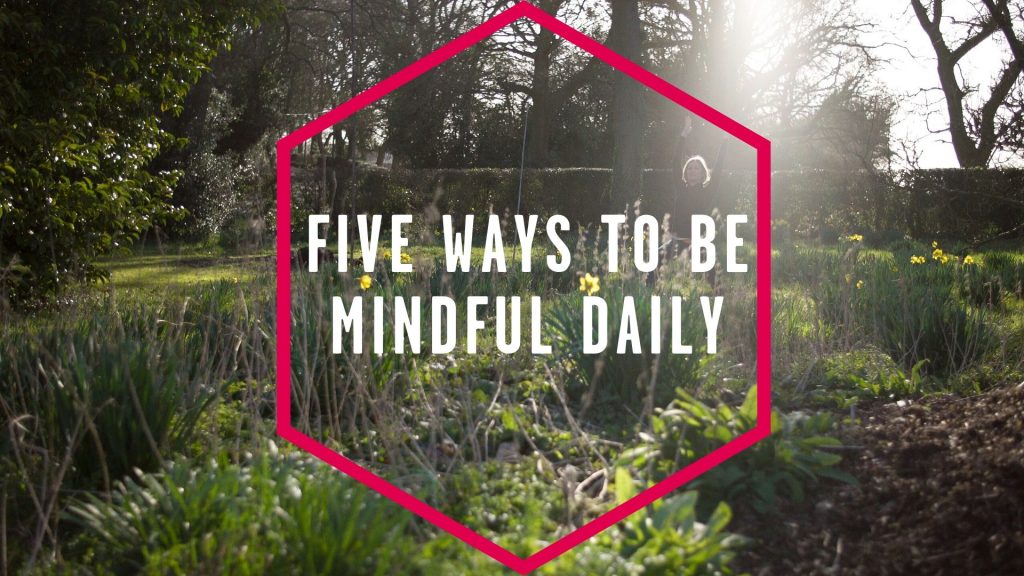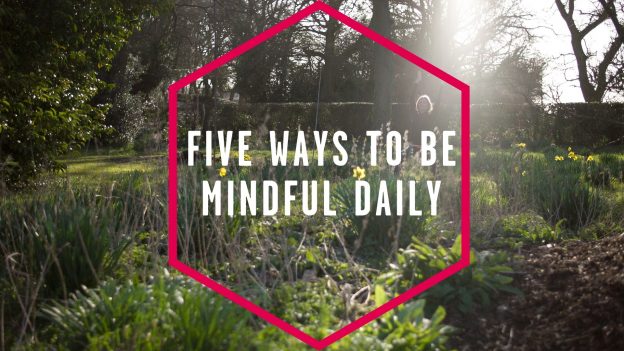
How often do you find yourself finally doing something you’d been looking forward to but not being able to fully enjoy the moment? Are you planning your next activity in your head to thinking about the past. These tips are designed to help you to enjoy the here and now.
Are you Mindful Daily?
Mindfulness offers you the chance to enjoy what is happening here and now. It sounds simple, but it can be challenging not to be drawn into the past or project ourselves into the future. The truth is that being mindful takes practice. These five tips will help you to flex and strengthen your mindfulness muscle.
1.Take Mindful Walks
Walking through green spaces puts the brain into a meditative state. Walking is a great way to boost your health: it’s readily available and it’s free. It can help soothe joint pain and boost your immune function. In fact, one study tracked over 1,000 adults and found that those who walked for at least thirty minutes a day had 43% lower respiratory tract infections but they were also less likely to be laid low for as long if they did get sick. Walking has also been shown to boost your energy and is a great alternative to a cup of coffee and it improves your mood.
To make your walking mindful, become aware of each step you take and each breath. Although many of the health benefits of walking have been linked to a moderate pace, people often perceive ‘mindful’ walking as being slow. This doesn’t necessarily need to be the case. As long as you are aware of every step that you are taking and what is around you, then you are walking mindfully. Try this between meetings or appointments, but bear in mind, rushing (rather than speed) can negate the benefits!
2. Practicing Mindfulness on Public Transport
Being on public transport or travelling is a great opportunity to practice mindfulness and really experience everything that is going on around you. Next time you forget your book or phone, use the journey as a way to develop your mindfulness.
To practice mindfulness on public transport, tune in to your senses. Noticing your breath is always a great first step. Has your breath changed or altered at all by being on public transport? Then tune into the sensations you are feeling. You might want to bring attention to whatever you’re sitting or leaning on. Follow this by listening to the different sounds you can hear, both close by and further away. Extend this to what you see, the quality of the light and how it might change as you move along. Notice the people travelling with you. You can always extend them good wishes. Finally you might want to bring your awareness to what you can smell around you. This is a great opportunity to notice if you are leaning into or away from a smell and what reactions this might be eliciting in your body and mind.
3. Eat Mindfully
Mindful eating is often practiced on retreats where every mouthful can be savoured for minutes at a time in silence. This might not be practical on a daily basis, but we can bring the principles of mindful eating to every meal and find we are enhancing every meal. The best guideline for mindful eating is to eat slowly. Remember to pause to taste each mouthful. Tune in to how hungry you are. Pause to express gratitude to the cook, or indeed for the food you are eating. Take the time to listen to your companions. Finally, focus on the fact you’re eating: mealtimes are not the best time to catch up on your correspondence, or finish off work.
4. Stop Multitasking
Multitasking has been shown to make you less efficient. It stands to reason: multitasking is infinitely distracting. Modern life, however does demand that we multitask and this suggestion may feel like an impossibility. Recent research shows that multitasking has resulted in us being more distracted all of the time, even when we need to concentrate. Focusing on one task at a time can seem challenging. Ultimately it is going to make it easier for us to focus and concentrate all the time, and may even mean we finish our tasks more efficiently, leaving us with more free time.
5. Schedule mindful breaks
Daily life is full of opportunities for mindfulness. Think of all the things that happen regularly that offer an opportunity for a mindful break. Every time you notice your inbox has another email, or your phone rings, or you notice that you have started to scroll on your preferred social media channel are all invitations to become more mindful. When any of these events happen, check back in with your breathing, feel your feet against the floor and notice where you are.
You can join MFML’s founder Kat Farrants and MFML teachers Dan Peppiatt and Lisa Sanfilippo at The Mindful Living Show and The Sleep Show on 6 – 7 March 2020.






Leave a Reply